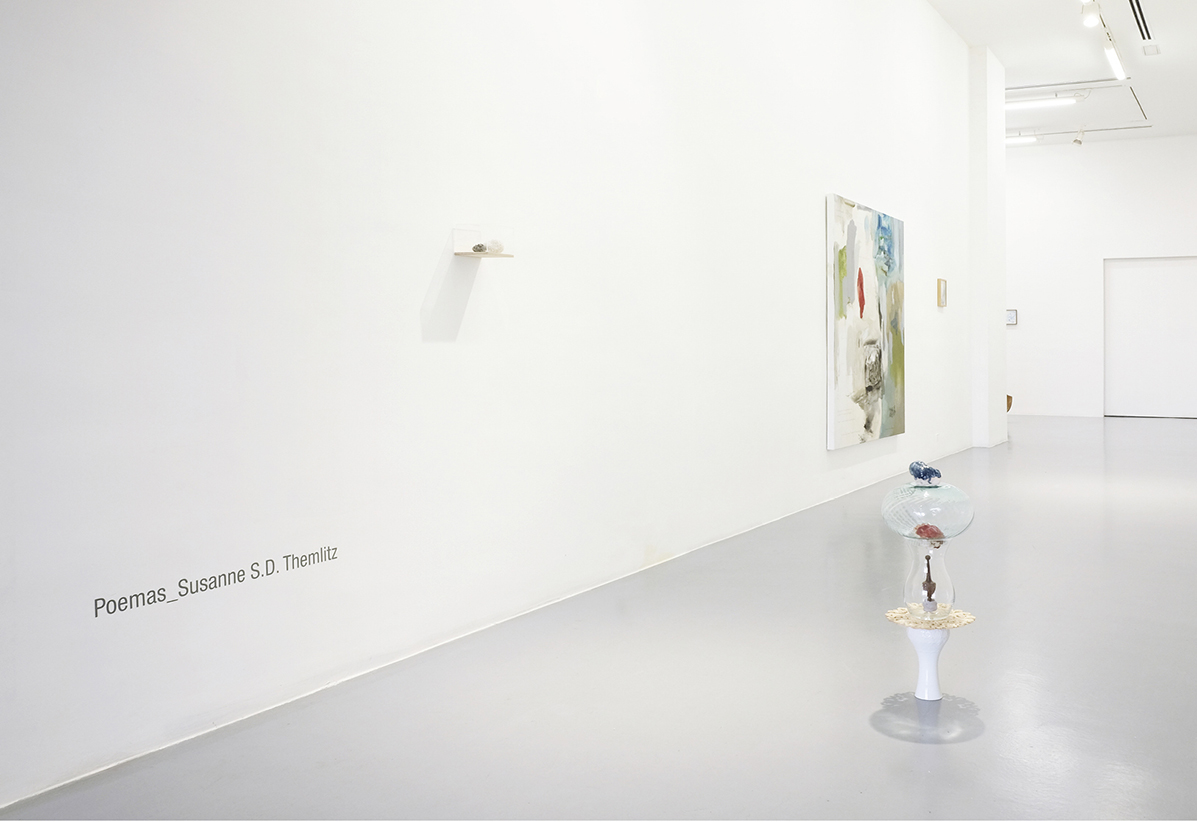


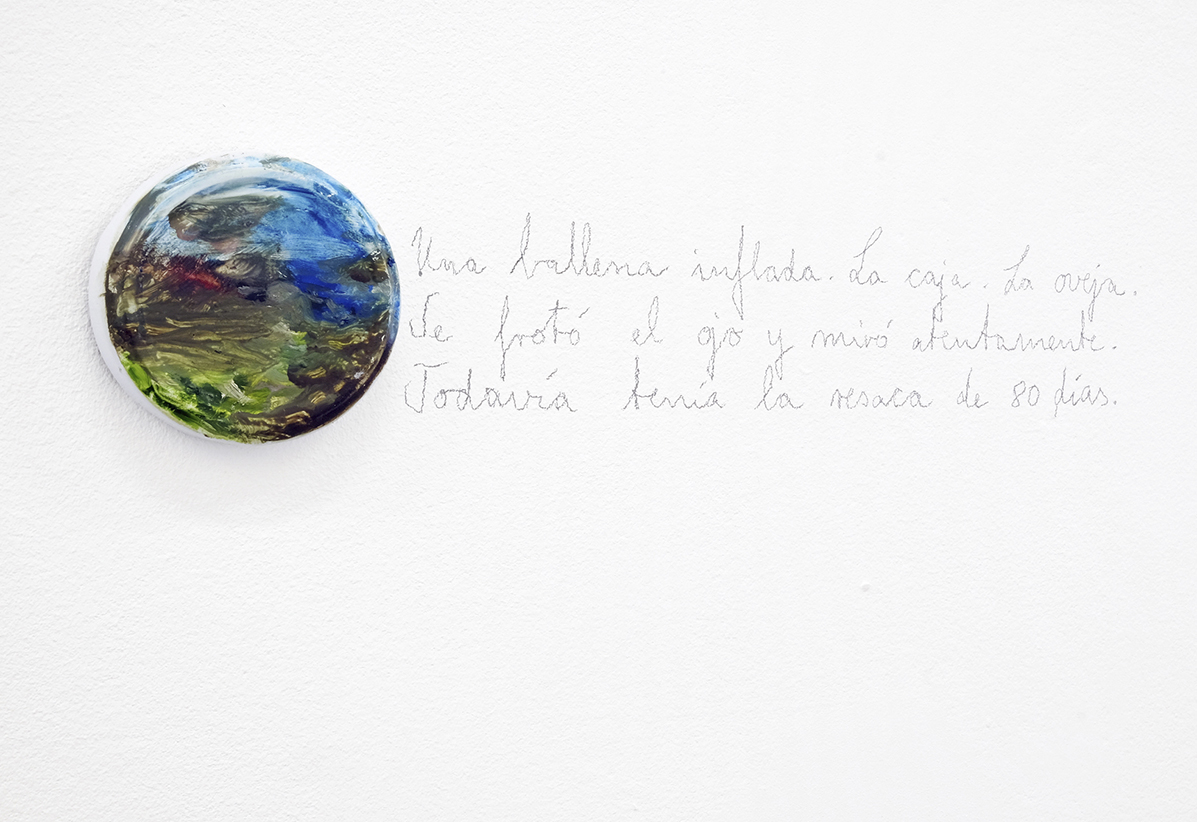
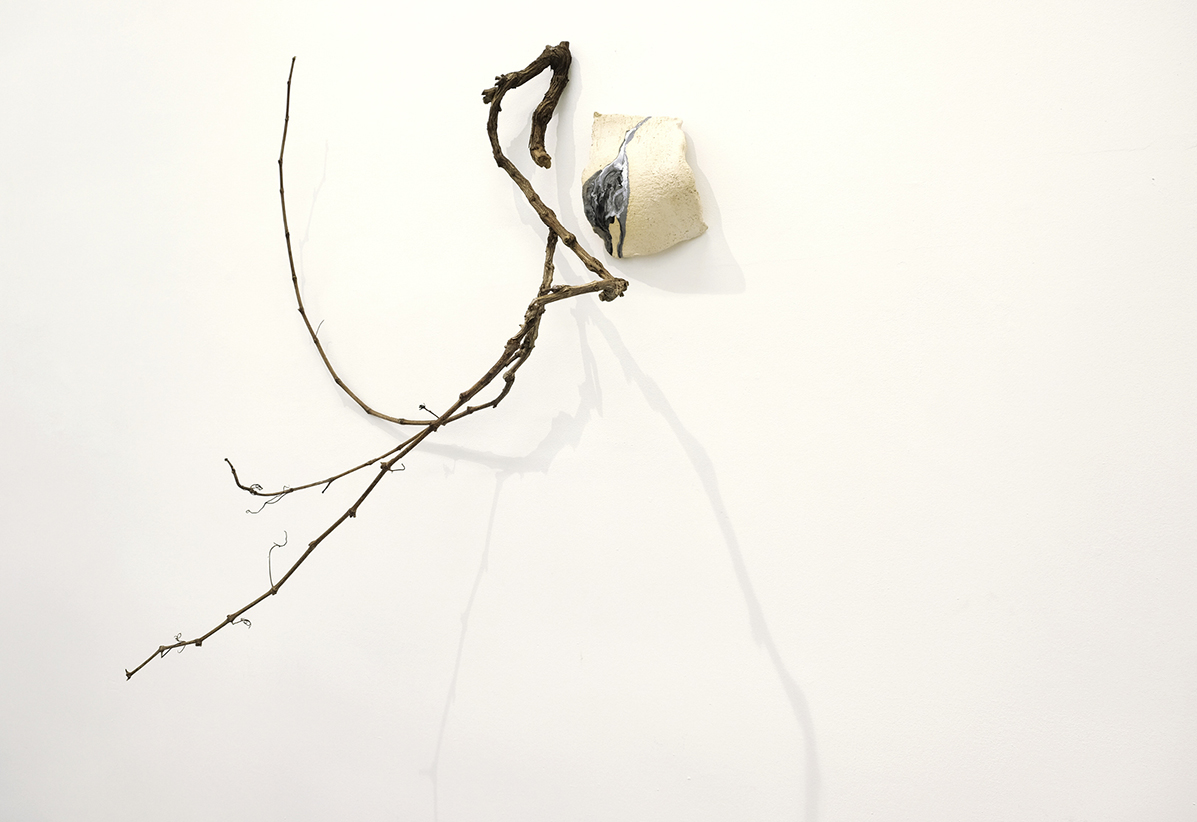
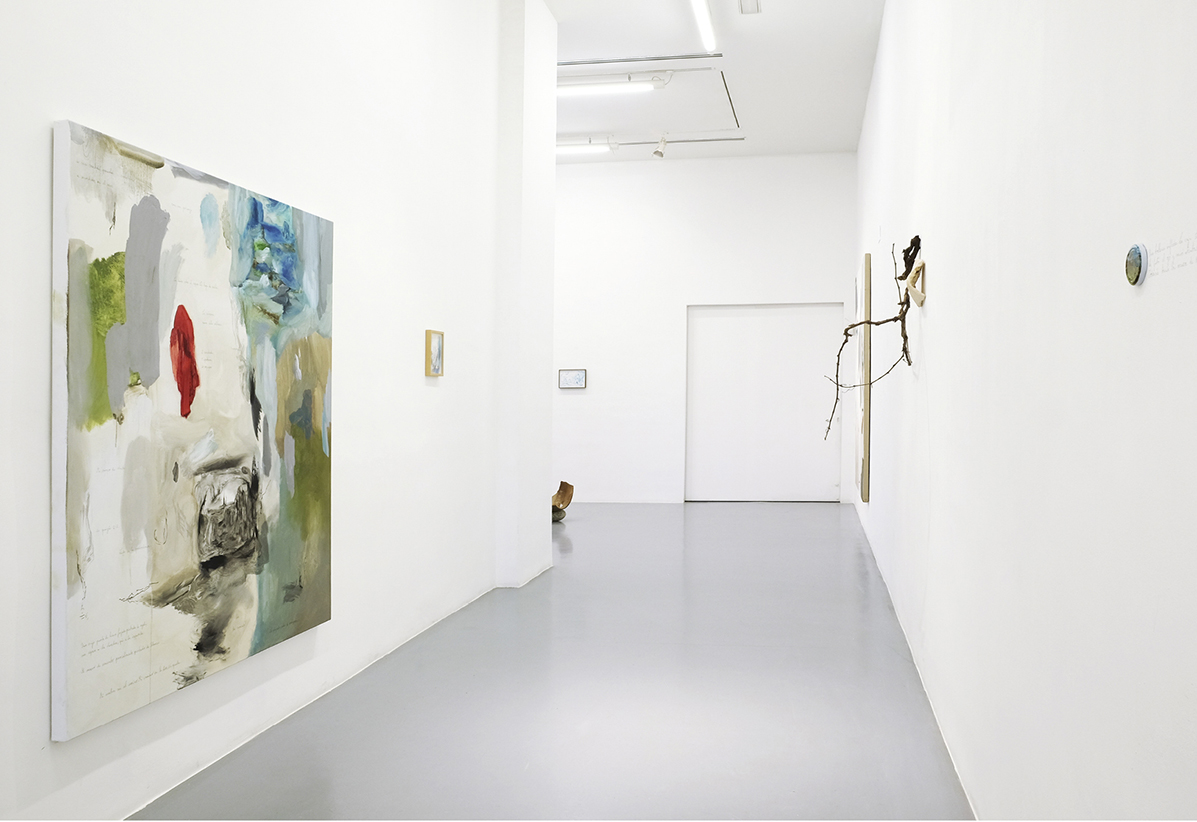
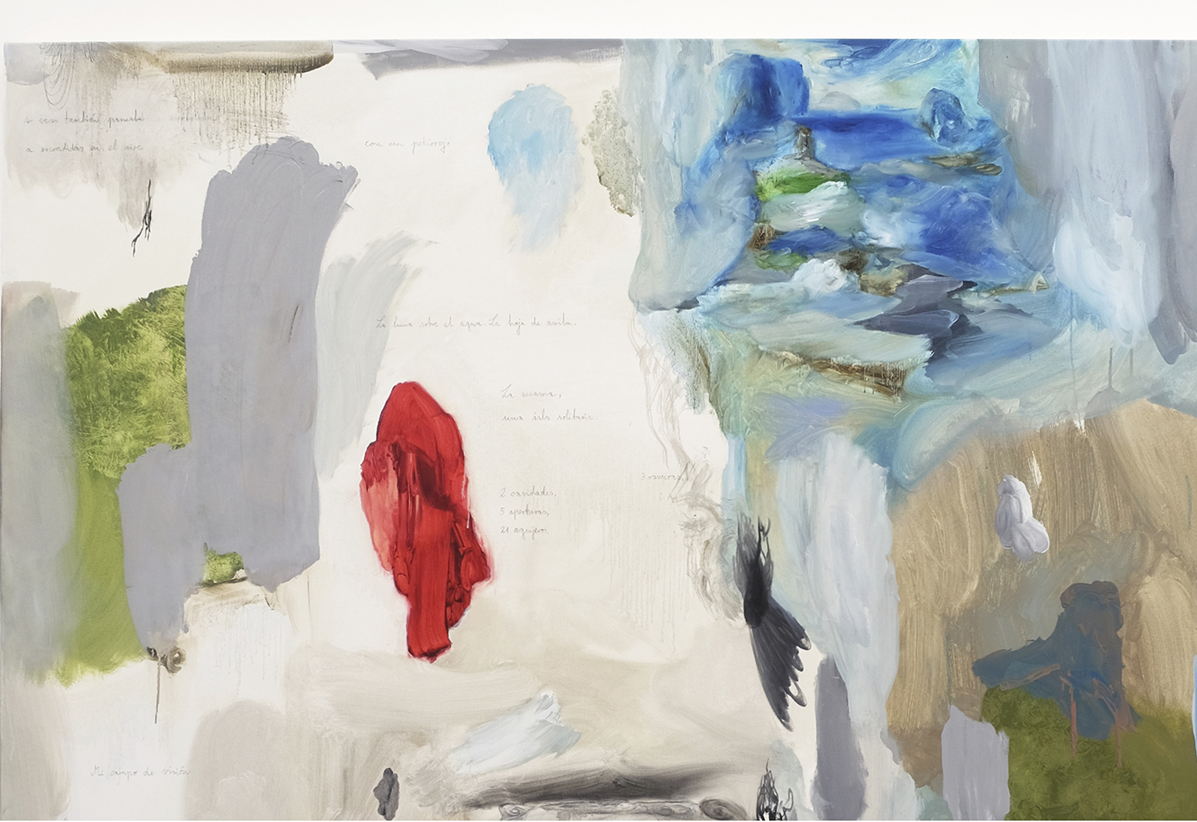

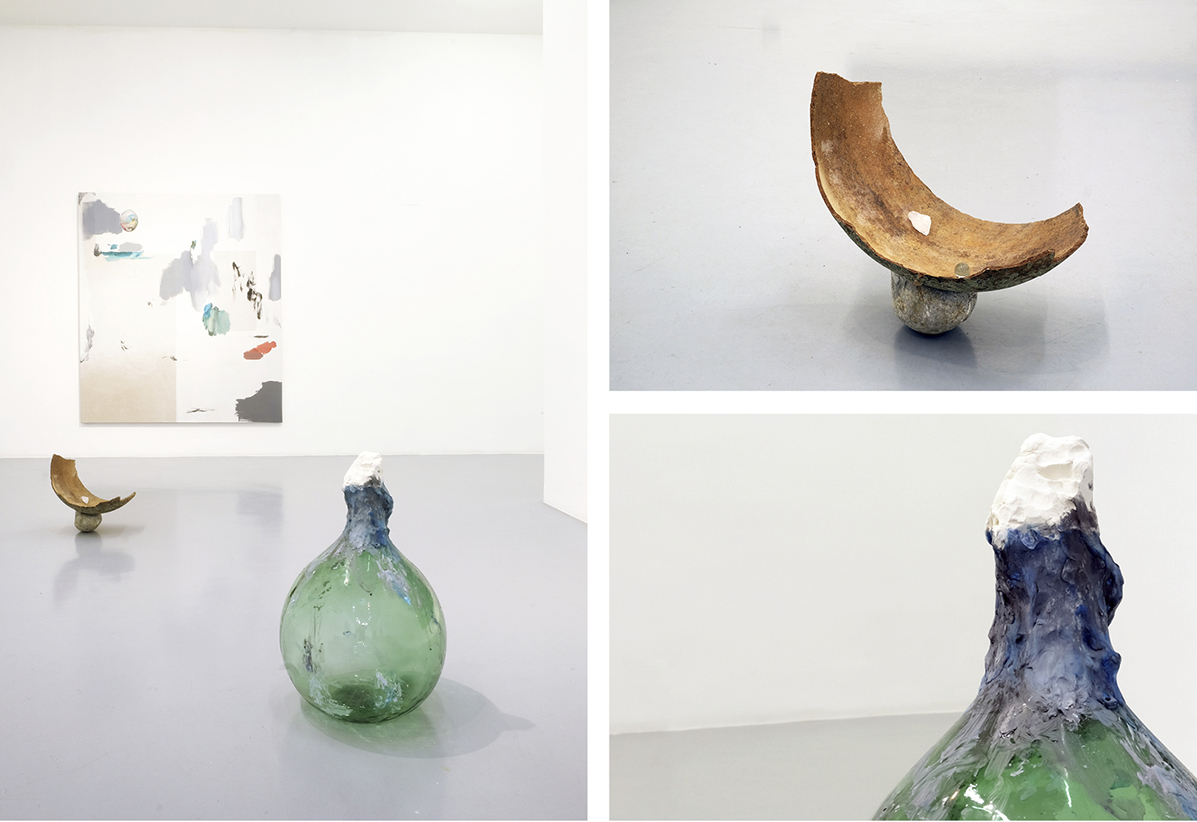
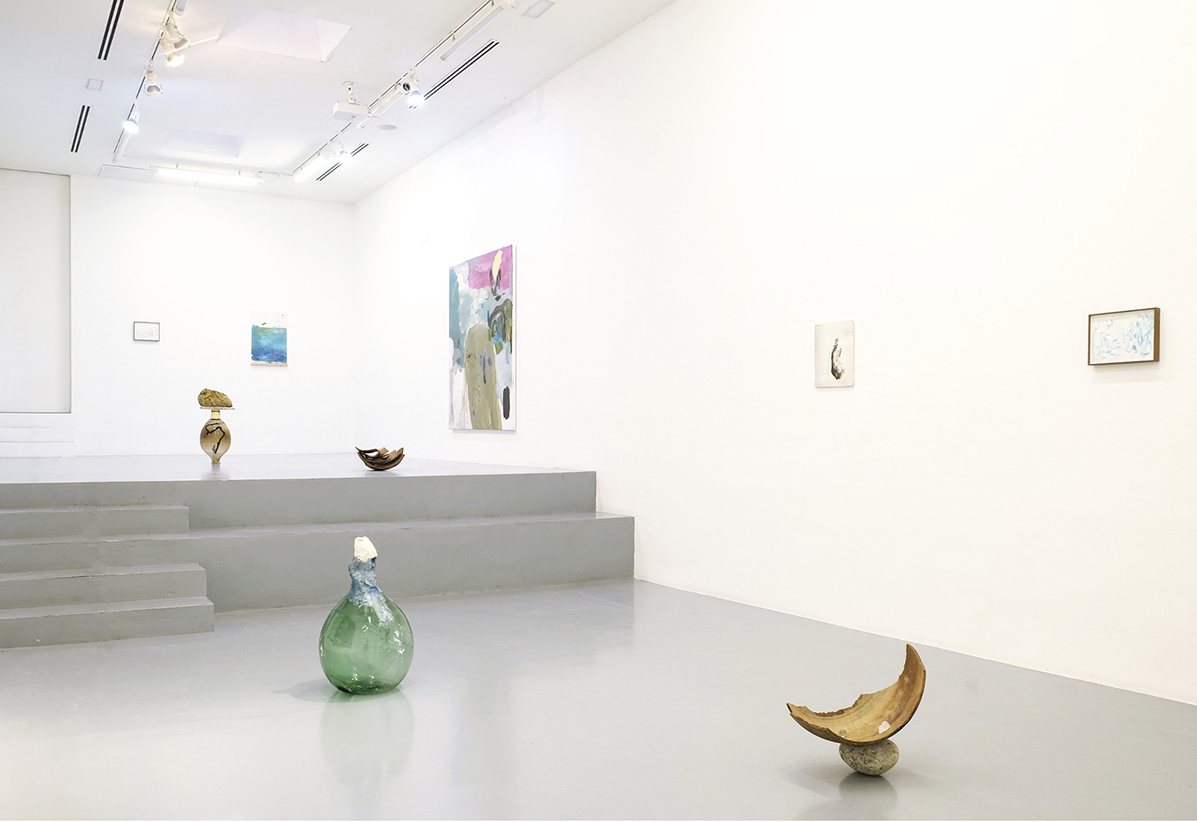
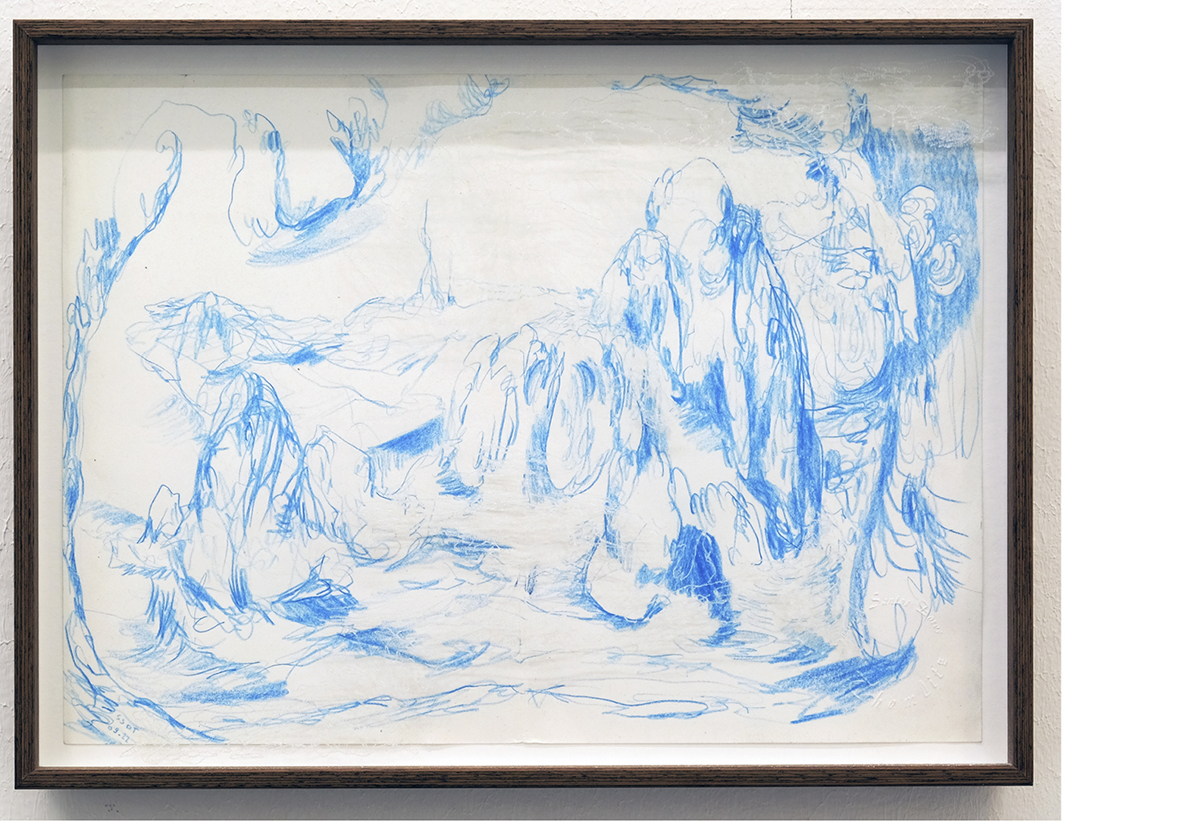
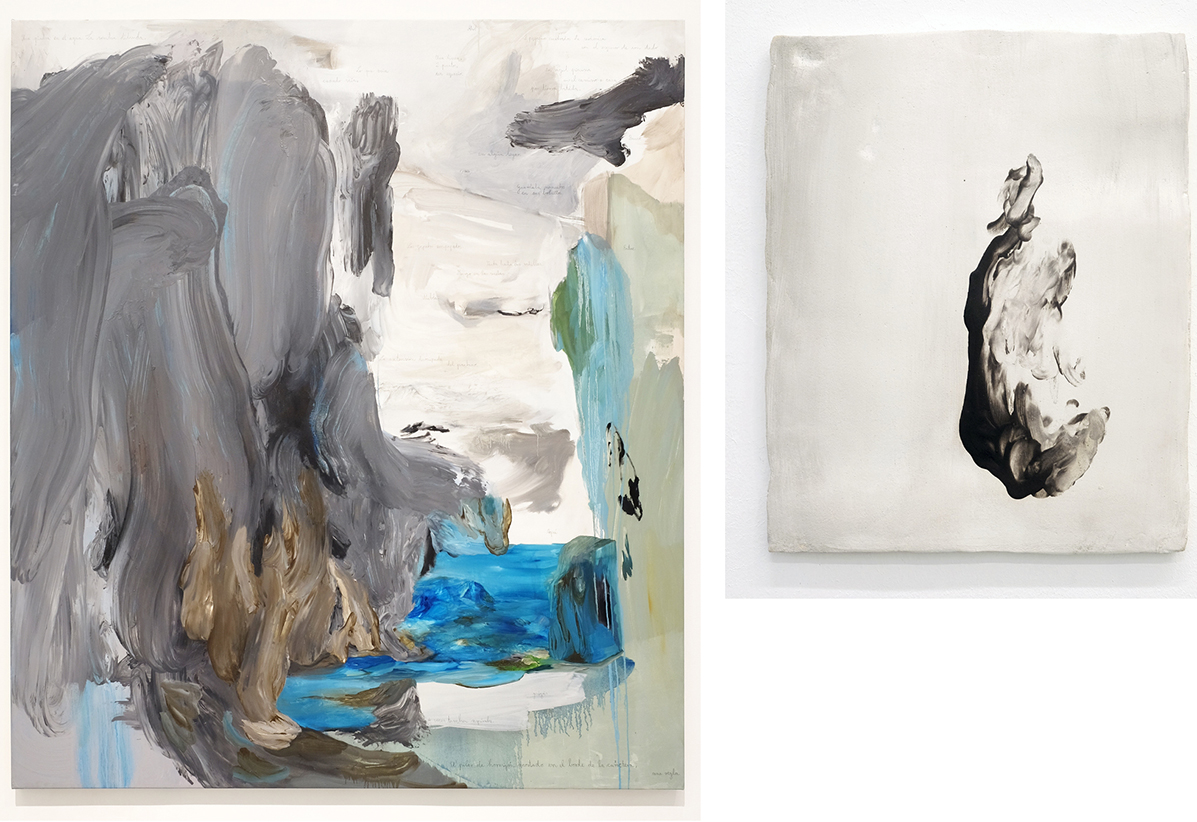

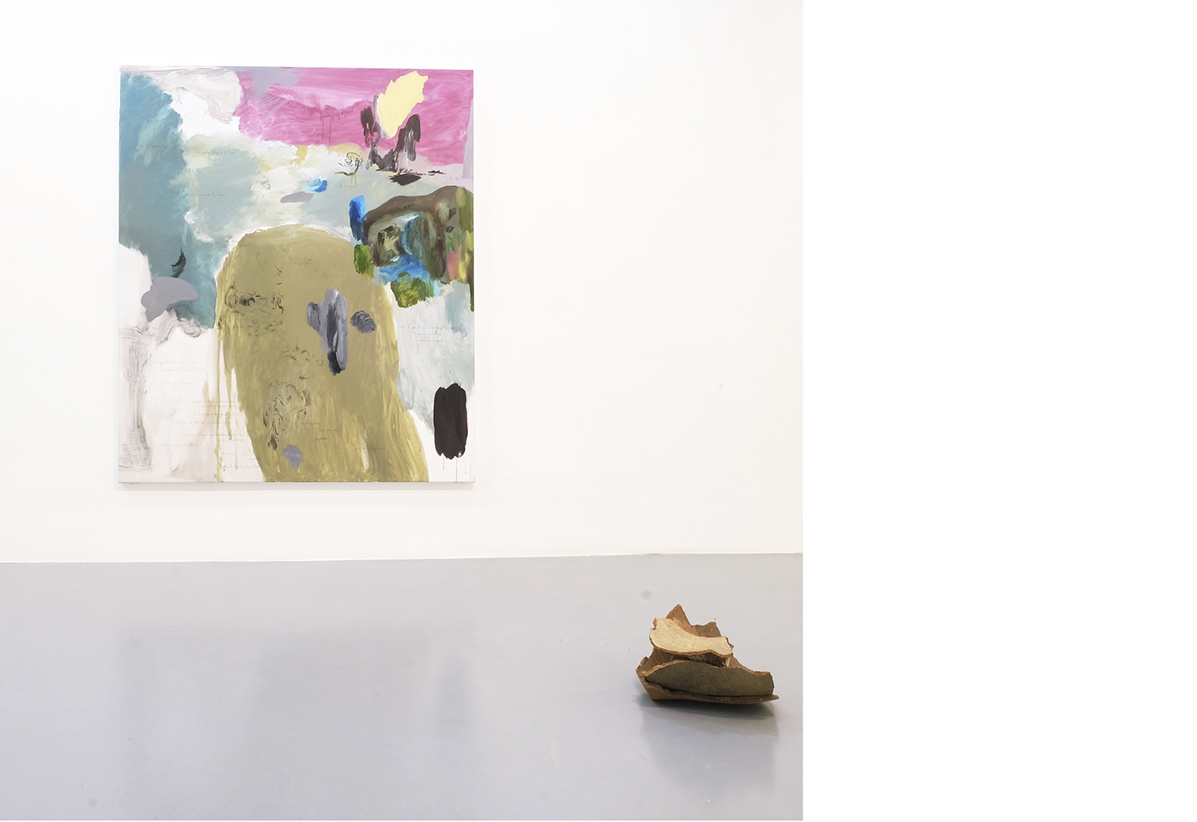
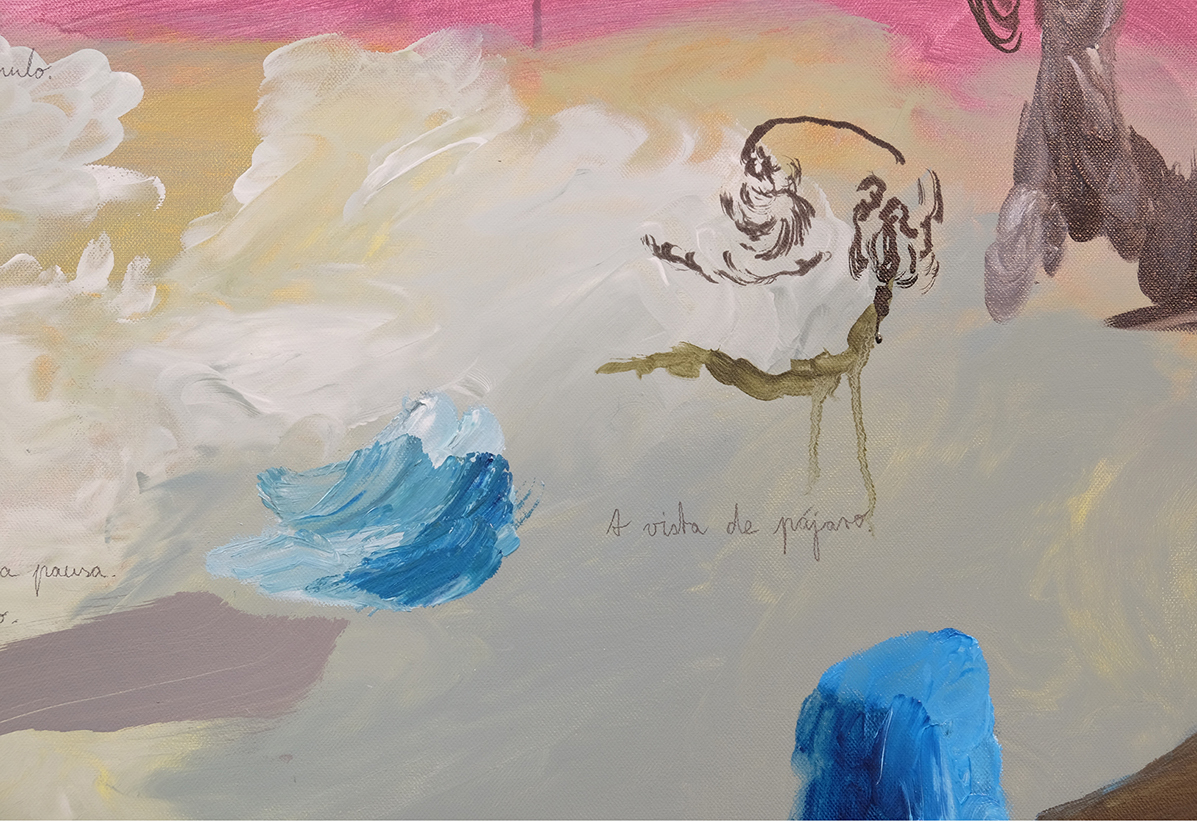
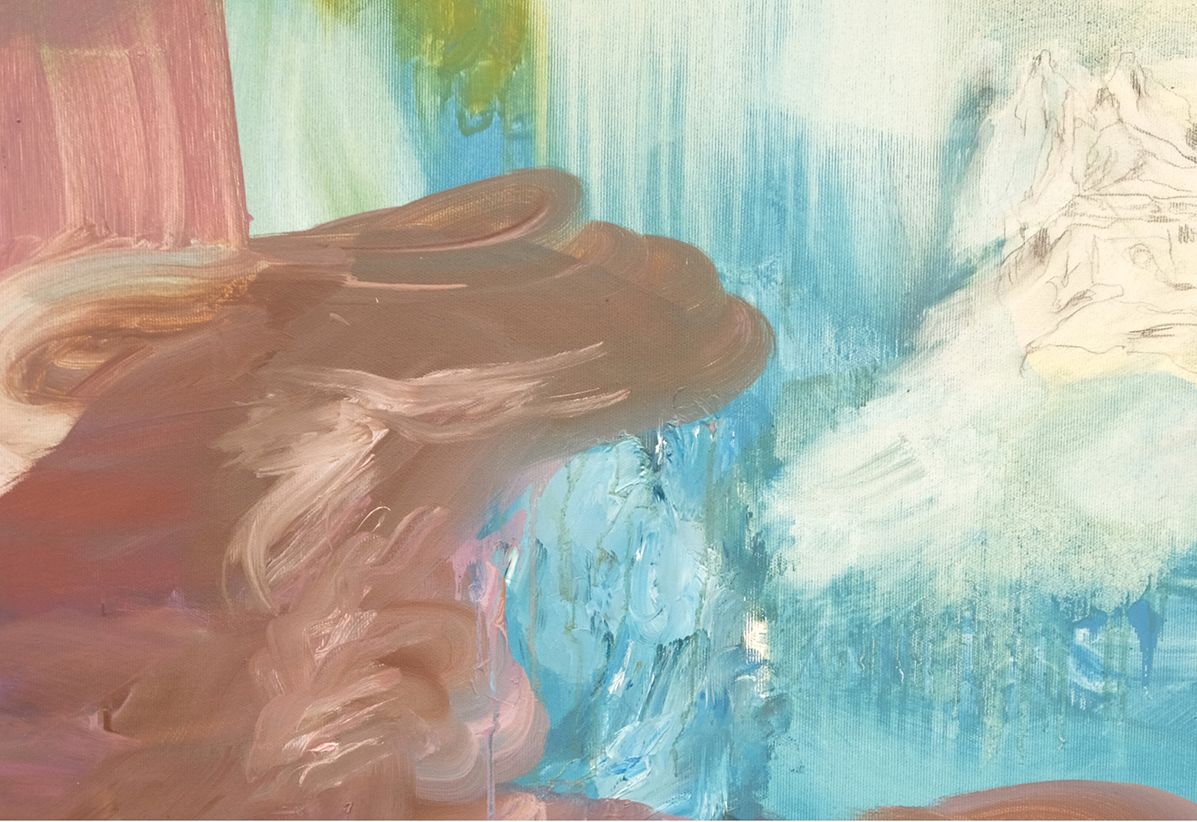
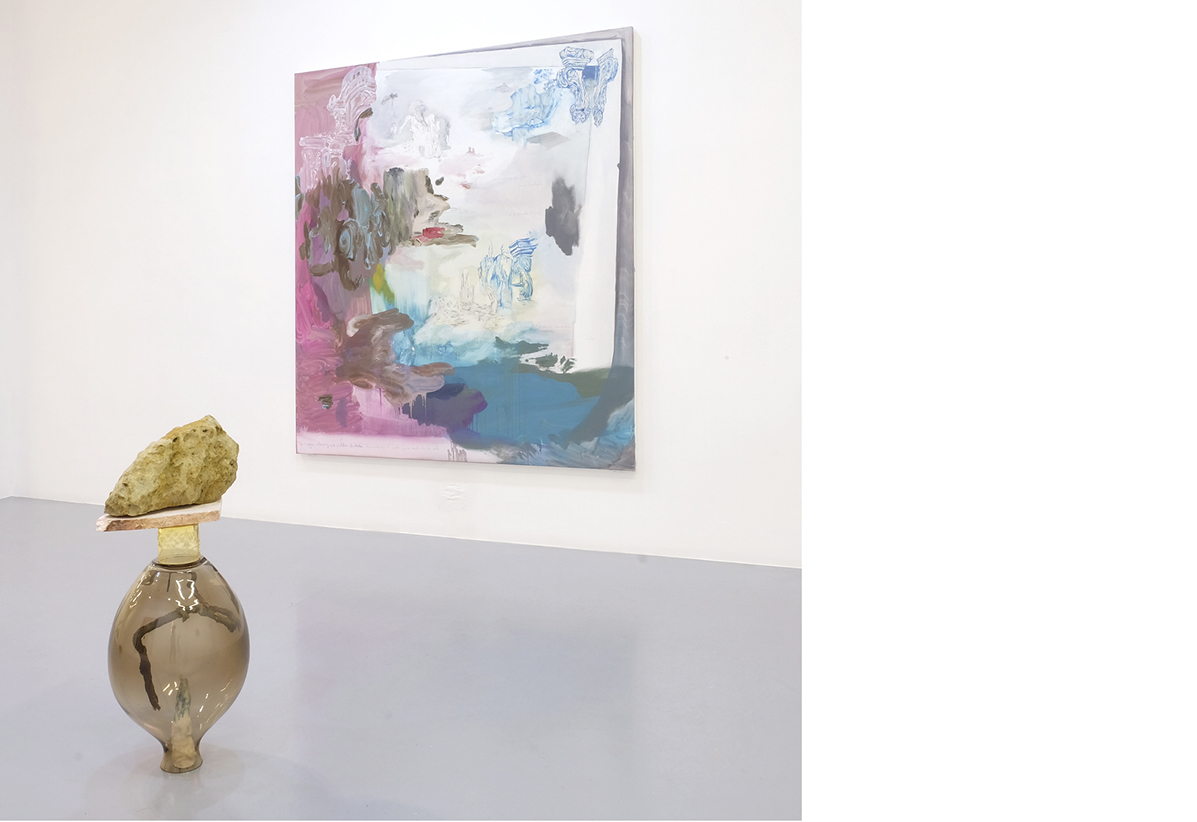
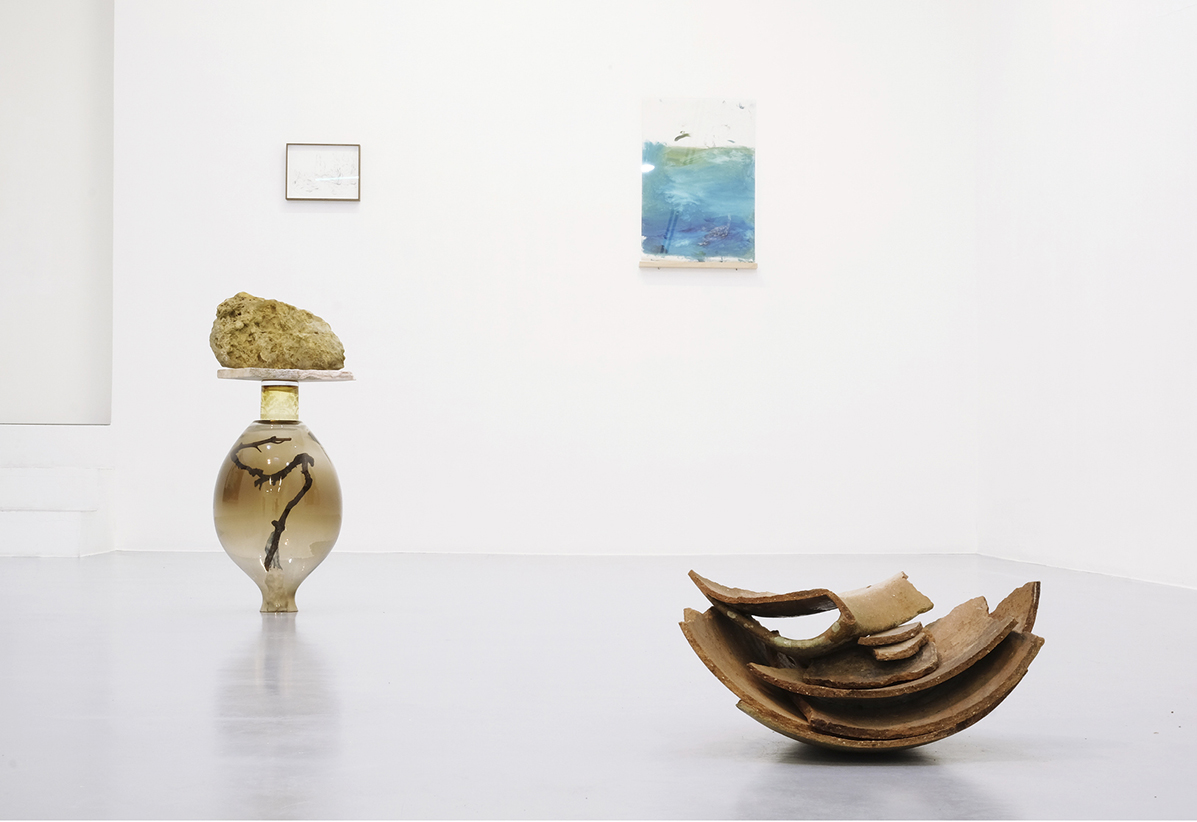
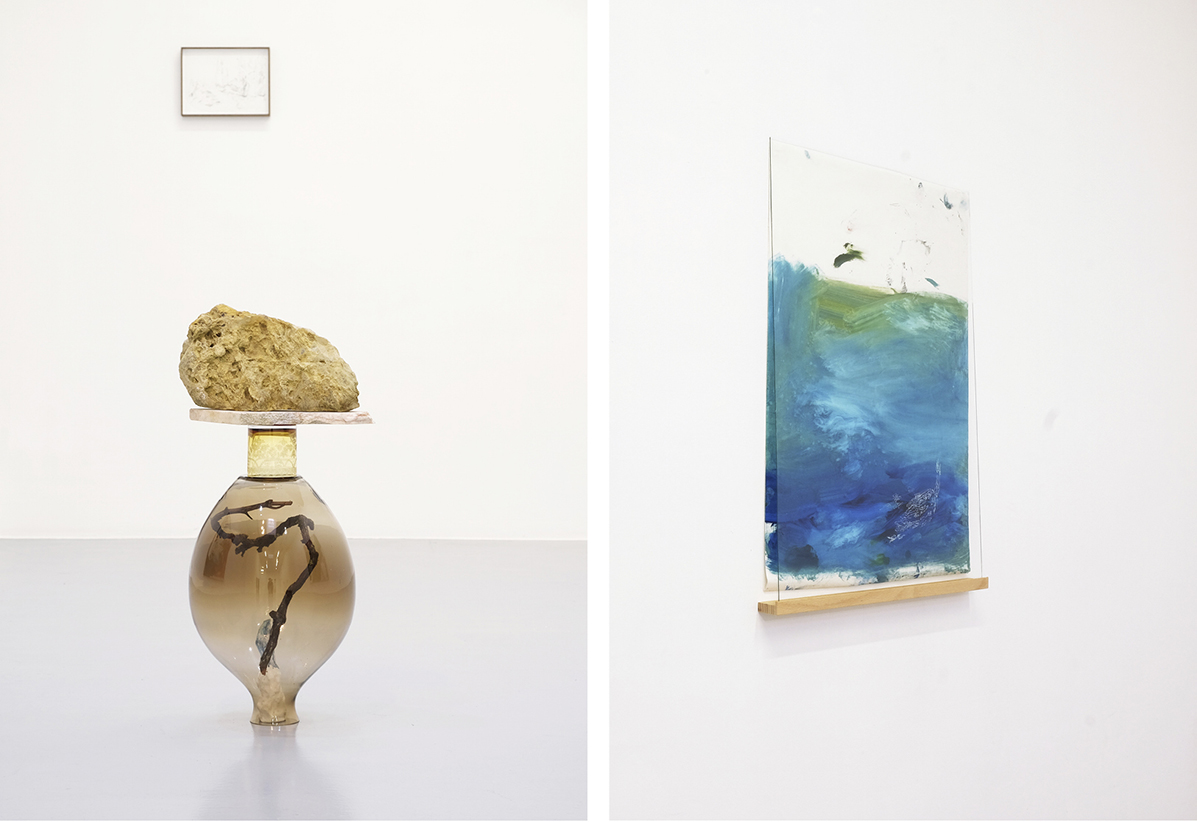
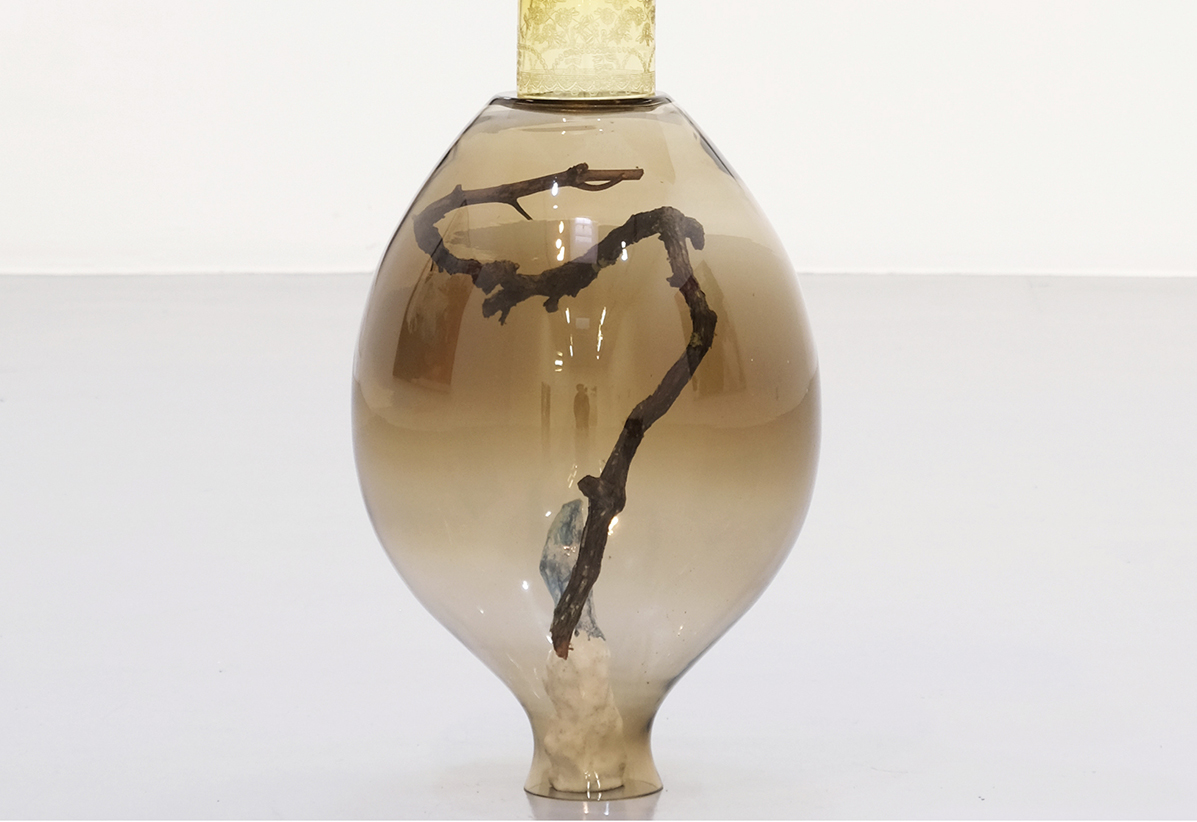
_Susanne S. D. Themlitz_ 03_17_23_05_15_23_Dossier
Susanne S. D. Themlitz (Lisbon, 1968), is a painter and sculptor who also works in illustration, photography and video. A constant factor in her work is related to the construction of images, with the mental processes that determine her particular imaginary world.
In Themlitz’s work, dreamlike aspects may appear, but here she clarifies: “Where do hallucinations or visual deliriums begin in the visual arts?” It is a question that addresses both artists and observers. “While uniting A and C may seem absurd if B is missing, B is still there. In fact, sometimes we take shortcuts and unite languages, since in the end we are all translators or, what is the same, each of us is an enormous digestive system.”
Indeed, these “Poemas” [Poems], in the new exhibition by Susanne Themlitz currently on view at Galería Ángeles Baños, are an invitation by the Portuguese-German artist to create our own, for “us to translate” them, but above all for us to know how to “digest them”, slowly.
It should be noted that for Susanne Themlitz, text, object and image have the same value, establishing varied narratives on their basis, or what she herself calls “mental landscapes”. In the imagistic magma of her paintings, a microscopic gaze unfolds, focused on every single particle, on possible juxtapositions, on intertwined associations, shifting scales, observations and citations, as well as on gestures (many subtle gestures). In “Poemas” the inclusion of phrases prevails, conscious of the “intermediate” spaces created in translations, something that Themlitz knows perfectly well thanks to her multiculturality. Once again, we encounter the idea of considering the work of art as a space open to interpretation, open to being re/created from the observer’s gaze, given that observers are ultimately those who complete it.
We do not know what is “primordial” in her mental landscapes, as apparently everything exists at once. There are fillings, for sure, yet voids are valued as well, that which is outside the field of vision, or ju st after it, enabling us to construct a narrative of our own. We are witness, furthermore, to different levels of interpretation; better yet, we move amongst “suspended planes”. This is why we are required to read between the lines. There is always that being at the same time, stripping down layer by layer, as in her artist books, where word and image are entwined.
As we have said, Themlitz unfolds her work in “intermediate spaces”, and these “Poemas”, as texts, titles and image, or sculptures, are charged with (possibly personal) resonances, opening themselves to the search for parallel worlds: worlds pertaining to us, our own.
With the support
![]()
